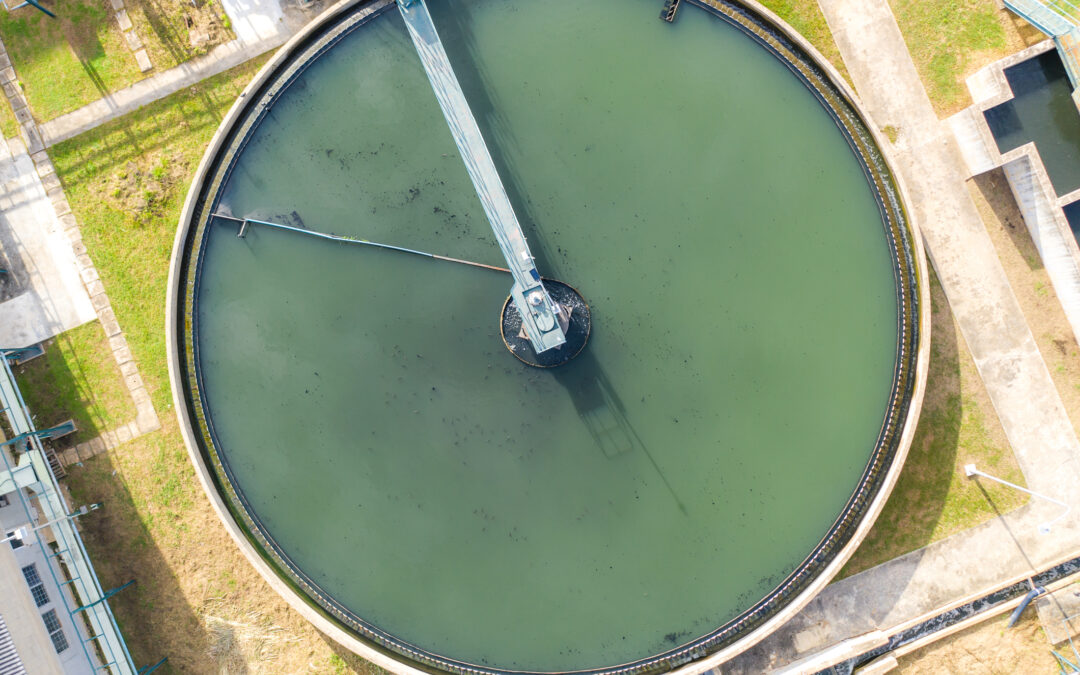Removing phosphorus from wastewater using coagulants should be a simple one and done process. The coagulant should react with the ortho-phosphorus, settle, be removed with the solids, perhaps be digested, then dewatered and disposed of.
Sadly, what “should be” often isn’t the case with traditional aluminum or iron-based coagulants. They just don’t have the chemistry for one and done.
Weak bonds lead to re-release of phosphorus as conditions change.
When wastewater and sludge go to the clarifier, or sludge is drawn off and goes to a digester, conditions change from those in the aeration basin. Dissolved oxygen drops, temperatures frequently change (by design in the digester), pH may increase or decrease. All of these impact the solubility the phosphate-coagulant precipitate from iron and aluminum coagulants. The result is often release of the phosphorus.
What are the downsides of release of phosphorus?
In the clarifier, release of the phosphorus can cause algal growth in the clarifier as the conditions are often ideal for algae – stagnant water, sunshine, warm temperatures. This creates a mess and requires additional maintenance in scrubbing the clarifier weirs and clearing scum rakes. If enough phosphorus is released, it can cause effluent violations, and is often a primary reason for the erratic and unpredictable fluctuations in effluent concentrations. Phosphorus can also be released in the sludge being recycled back (as RAS), which increases the influent phosphorus that has to be reduced by – you guessed it – more coagulant. Nothing quite like having to remove the same phosphorus over and over again, with ever increasing coagulant dosages.
In the digester, released phosphorus goes back into the decant, which is recycled back to the headworks. This phosphorus can react with the magnesium and ammonia to form struvite, a crystalline scale that clogs pipelines, centrifuges, pumps, and belt filters. Struvite clogs lead to costly and messy shutdowns to clean out piping and pumping systems. Assuming the phosphorus in the decant makes it back to the headworks without precipitating as struvite, again, the phosphorus must be removed one more time, and that means more coagulant.
Bottom line, release of phosphorus impacts your bottom line.
Release of phosphorus impacts your bottom-line.
- In the clarifier, it can cause exceedances of your phosphorus limit, resulting in violations and fines.
- It increases your maintenance needs.
- Contributes to algal blooms in the clarifier, requiring scrubbing.
- May precipitate as struvite and clog pipes, pumps, centrifuges, and belt filter presses.
- It increases your chemical costs as more coagulant has to be added – to remove the phosphorus again. In most cases, you must also add more caustic to counteract the acidity of the coagulant.
With Neo WaterFX, phosphorus removal is one and done – no release.
WaterFX binds tightly with phosphorus. More important, it remains bound over a broad range of pH, dissolved oxygen, and temperature, eliminating release in the clarifier and the digester. By eliminating release, your dosing is stable, no more adjusting for recycled released phosphorus. Your maintenance is simplified, with no need to scrub clarifiers or worry about struvite clogging equipment and shutting down your processes.
Best of all, release of phosphorus won’t cause violations!
With Neo WaterFX, phosphorus removal really is one and done!
If you are ready for your phosphorus removal to be one and done, contact us for a free consultation.



